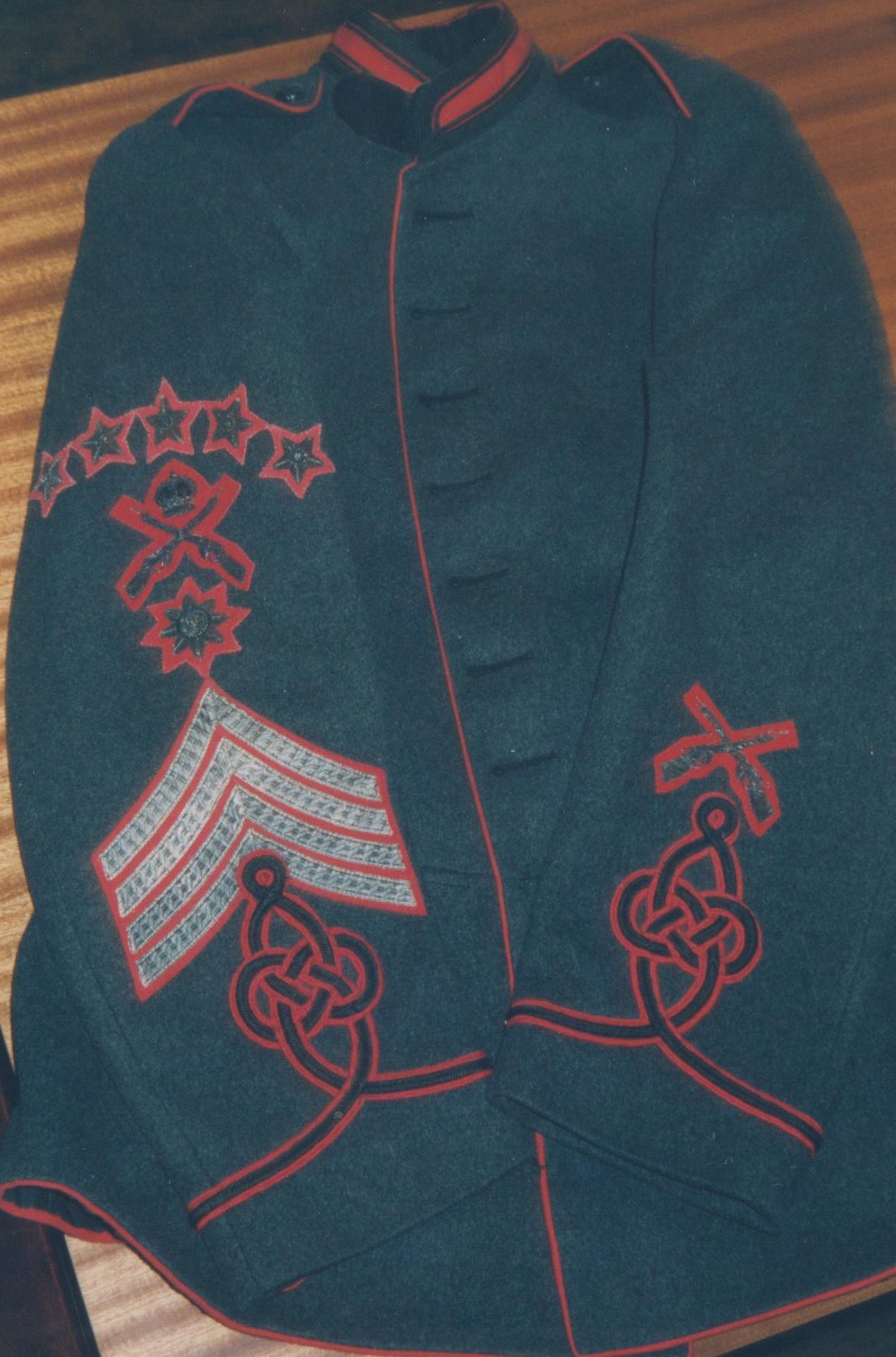Made by Hobson & Sons of London, the tunic is dated 23 June 1906 but it is of the pattern worn between 1875 and 1908. The individual rifle corps originally formed in the county in 1859 and 1860 had become a so-called administrative battalion in which the corps retained control of weapons, stores and funds but shared the expense of an adjutant and drill instructors. The overall commanding officer had only general charge of drill and discipline whilst the adjutant kept in touch with the corps. The administrative battalion then became a formally consolidated battalion as the 1st Bucks Rifle Volunteers in 1875. Subsequently, it became the Buckinghamshire Battalion of the Territorial Force in 1908.
The shoulder straps bear the insignia 1Bck. On the right sleeve, the four chevrons and the star indicate the rank whilst the crossed rifles marksman’s badge with crown shows possession of the sergeant instructor of musketry certificate. The five stars (each with five obtuse points) show that the individual has been returned as efficient for five years at a time, thus for a total of 25 years, stars for shooting prowess having four points. The crossed rifles on the left sleeve indicates a marksman but also that the corps as a whole has gone through the course of musketry instruction equivalent to that for the regular army.
The name inside is illegible but the tunic is most likely to be that of the long-serving Colour Sergeant Instructor E. Brown of the Aylesbury Company, who retired from ill health in April 1908 when the Territorial Force was formed. Brown had served as a regular in the 2nd Battalion, The Oxfordshire Light Infantry (52nd) in India. A poplar figure, Brown was presented with a wedding present by the company at a smoking concert in the Bull’s Head in April 1898.
